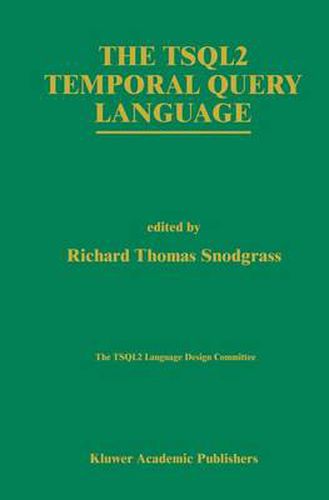Readings Newsletter
Become a Readings Member to make your shopping experience even easier.
Sign in or sign up for free!
You’re not far away from qualifying for FREE standard shipping within Australia
You’ve qualified for FREE standard shipping within Australia
The cart is loading…






This title is printed to order. This book may have been self-published. If so, we cannot guarantee the quality of the content. In the main most books will have gone through the editing process however some may not. We therefore suggest that you be aware of this before ordering this book. If in doubt check either the author or publisher’s details as we are unable to accept any returns unless they are faulty. Please contact us if you have any questions.
Temporal databases have been an active research topic for at least fifteen years. During this time, several dozen temporal query languages have been proposed. Many within the temporal database research community perceived that the time had come to consolidate approaches to temporal data models and calculus based query languages, to achieve a consensus query language and associated data model upon which future research can be based. While there were many query language proposals, with a diversity of language and modeling constructs, common themes kept resurfacing. However, the community was quite frag mented, with each research project being based on a particular and different set of assumptions and approaches. Often these assumptions were not germane to the research per se, but were made simply because the research required a data model or query language with certain characteristics, with the partic ular one chosen rather arbitrarily. It would be better in such circumstances for research projects to choose the same language. Unfortunately, no existing language had attracted a following large enough to become the one of choice. In April, 1992 Richard Snodgrass circulated a white paper that proposed that a temporal extension to SQL be produced by the research community. Shortly thereafter, the temporal database community organized the ARPA/NSF In ternational Workshop on an Infrastructure for Temporal Databases, which was held in Arlington, TX, in June, 1993.
$9.00 standard shipping within Australia
FREE standard shipping within Australia for orders over $100.00
Express & International shipping calculated at checkout
This title is printed to order. This book may have been self-published. If so, we cannot guarantee the quality of the content. In the main most books will have gone through the editing process however some may not. We therefore suggest that you be aware of this before ordering this book. If in doubt check either the author or publisher’s details as we are unable to accept any returns unless they are faulty. Please contact us if you have any questions.
Temporal databases have been an active research topic for at least fifteen years. During this time, several dozen temporal query languages have been proposed. Many within the temporal database research community perceived that the time had come to consolidate approaches to temporal data models and calculus based query languages, to achieve a consensus query language and associated data model upon which future research can be based. While there were many query language proposals, with a diversity of language and modeling constructs, common themes kept resurfacing. However, the community was quite frag mented, with each research project being based on a particular and different set of assumptions and approaches. Often these assumptions were not germane to the research per se, but were made simply because the research required a data model or query language with certain characteristics, with the partic ular one chosen rather arbitrarily. It would be better in such circumstances for research projects to choose the same language. Unfortunately, no existing language had attracted a following large enough to become the one of choice. In April, 1992 Richard Snodgrass circulated a white paper that proposed that a temporal extension to SQL be produced by the research community. Shortly thereafter, the temporal database community organized the ARPA/NSF In ternational Workshop on an Infrastructure for Temporal Databases, which was held in Arlington, TX, in June, 1993.